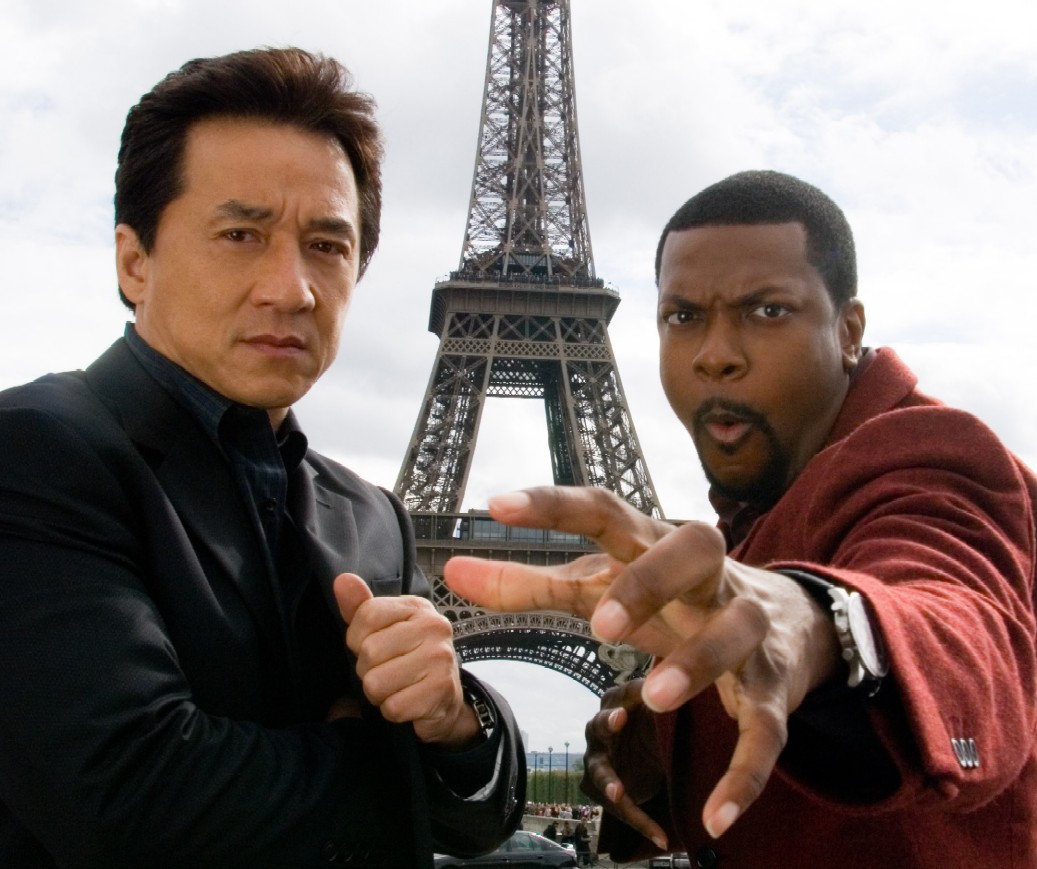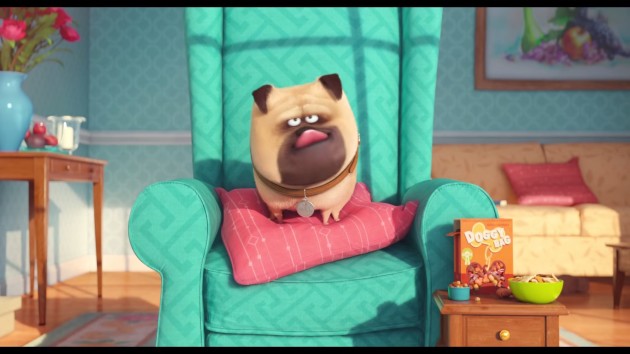Rush Hour remains one of the most unique and entertaining buddy-cop series to date. Marred only by a worn framework and vague exposition, the trilogy endures with an irresistible cast, ludicrously dangerous stunts, and perfectly timed stereotype satire. You’d be hard pressed to find a duo with more humor and heart than Jackie Chan’s Inspector Lee and Christ Tucker’s Detective Carter.
Haven’t there been other action movies that have come out since then that I can watch? The short answer: not like this.
Sure, there’s no CGI and, no, it’s not Marvel, but these qualities make the franchise unique in today’s over-budgeted films. The action is real, there’s topical humor, and it offers audiences a look back at buddy-cop films that are unique to what you might see today (i.e. Lethal Weapon).
It is also worth addressing the cultural significance of watching Rush Hour before we jump in. The trilogy leans into Chinese and Black stereotypes in Hollywood to mitigate them through satire, but the overall narrative also naturalizes cops. While there are comedic moments that lightly touch on abuse of power and black policemen disserving their community, the premise of two law enforcement agents –Detective Inspector Lee of the Hong Kong Police Force (Jackie Chan) and LAPD Detective James Carter (Chris Tucker)– teaming up to locate a kidnapped girl implies that there are “good cops” and that police specifically are the only ones who can get this job done. In light of the Black Lives Matter protests and the work of prison/police abolitionists, it’s important to note that this narrative contributes to the naturalization of cops.
First, the combination of Jackie Chan and Chris Tucker make for an unforgettable duo. The two hail from starkly different cinematic backgrounds that offer an unexpected complimentary ensemble. Second, you get the visceral and seemingly improvised action of Chan intercut with the comedic style of Tucker. When one’s physical comedy starts blending with the other’s dexterous standup routine, the film provides a range of tactics to make the audience laugh out loud. Third, the films satirize racial stereotypes in Hollywood as writers Ross Lamanna and Jeff Nathanson utilize their characters’ identities to offer a fresh take on stereotypes housed in a buddy-cop framework. Together, the characters, action, and racial discourse in the films make for a truly entertaining and uplifting cinematic experience.
By the Byline:
- Rush Hour (1998): The Chinese Consul’s daughter is kidnapped in Los Angeles.
- Rush Hour 2 (2001): A triad crime lord bombs the American embassy in Hong Kong.
- Rush Hour 3 (2007): Triads from Paris strike against the Chinese Ambassador.
- Jackie Chan & Chris Tucker
Unlike other buddy-cop films that pair a by-the-books personality with a rulebreaker, Rush Hour takes full advantage of Jackie Chan and Chris Tucker’s multi-talented personalities. Chan plays Inspector Lee of the Hong Kong Police Force who responsible, dedicated to his job, and proficient in martial arts. Opposite, Tucker’s Detective Carter is an FBI wannabe working as a policeman in Los Angeles who charges into conflict with gusto and playfulness. His charisma helps him hang on to his job by the skin of his teeth. Where Lee isn’t familiar with Los Angeles culture, Carter is able to use his connections to get information. When Carter finds himself hilariously outmanned, Lee helps him fight out of any situation. Though it takes a while for the characters to respect each other’s strengths, they quickly come together when the stakes are high.
Additionally, the actors are believable and effective. The emotional moments are as grounded as the comedic moments are real and embarrassing. The actors’ talent and palpable affection towards one another make for a solid core to the franchise. Add some memorable side characters like the disgruntled taxicab driver, George (Yvan Attal), a French nun (Dana Ivy) who knows how to interrogate an assassin, a quadruple agent (Roselyn Sanchez), a giant (Sun Mingming), and a restaurant owner doubling as the host of a gambling ring (Don Cheadle), and you’ve got yourself a roster of timeless comedic performances.
- Action
If you’re familiar with Jackie Chan, then you know his action sequences are the real deal. Spanning three films, you’ll see him acrobatically protect museum pieces while staving off a flurry of fighters, scale bamboo scaffolding on the side of a high-rise, and wield a Katana on the side of the Eiffel Tower. When Tucker’s character is often left admiring Lee mid-fight, you might be wondering if the camera caught an honest reaction.
Chan flourishes martial arts styles such as Hapkido, Karate, Judo, TaeKwonDo, and Jeet Kun Do, weaving them into the story with expertise. What really makes Chan stand out is how he incorporates the environment into the action. He uses common objects like rugs, trash cans, hats, and chairs, but also explosive vests and casino tables to gain the upper hand in his fights. Throughout the trilogy, you can see Tucker learning from Chan’s resourceful fighting technique.
One of the best action sequences occurs in the middle of Rush Hour 2. Throughout the film, Lee sidelines Carter’s initiative to go on vacation in order to solve a new case. After spending some time in a massage parlor, Carter runs into the main antagonist, Ricky Tan (John Lone), and destroys his laptop in characteristically bombastic fashion. Unthreatened, Tan leaves while Lee and Carter defend themselves against an army of fighters in pink and purple bathrobes. The two detectives, now both proficient in martial arts, battle their way through the henchmen wearing nothing but towels.
These kinds of sequences are typical for the Rush Hour films and are interrupted by short bouts of exposition and hilarious investigation tactics. While the two sequels were released in the 2000’s, the 90’s-style kung fu remains a timeless staple throughout the entire series.
- Stereotypes and Satire
Unique for featuring a bi-racial duo as the centerpiece of a Hollywood action film, Rush Hour hubs its comedy around racial stereotypes. That’s not an all-encompassing “bad” thing.
At first, Lee embodies the stereotype of the diligent and hardworking Asian man and potentially substitutes for the white “gatekeeper” of Black men. Carter starts off the first film as the long-standing Hollywood stereotype of the carefree Black man. Over the course of the film, we see the two characters lean into negative stereotypes to poke fun at them.
Like in Rush Hour 3, when Lee and Carter visit a dojo to find information about a potential killer. Before they enter, Carter makes a joke about culture and sleights Lee for not being tall enough to be Black. However, Carter enters the room to face a massive 7’9” Asian adversary. The filmmakers proceed to use an over the shoulder shot to make Carter look tiny and fearful, crushing his negative stereotype with a memorable fight sequence.
One study found that while there is a disproportionate number of negative stereotypes compared to positive stereotypes referenced in Rush Hour, the negative stereotypes are mostly used for satirical purposes that ultimately disprove them. By the end, the heroes overcome the stereotypes leveled at them in order to create a new normal.
Lee and Carter rely on each other and adopt one another’s food choices, candor, music, fighting styles, and cultures. These tactics are developed over the course of three films as part of their character arcs, so the narrative serves to provide positive changes to Hollywood’s harmful tropes. Rush Hour highlights the differences that make each character unique and breaks down negative stereotypes to show a celebration of diverse cultures.
Especially in this time of COVID and with the heightened risk of folks participating in Black Lives Matter during quarantine, we recommend binging Rush Hour with some Chinese takeout, Soul Food, and a side of gefilte fish (stay for the films’ credits) to help local businesses hurt by the pandemic
P.S.: director Brett Ratner has been exposed as an abuser during the #MeToo movement. As viewing this work contributes to the monetary and cultural elevation of his status, it’s important to recognize how he has harmed others.

